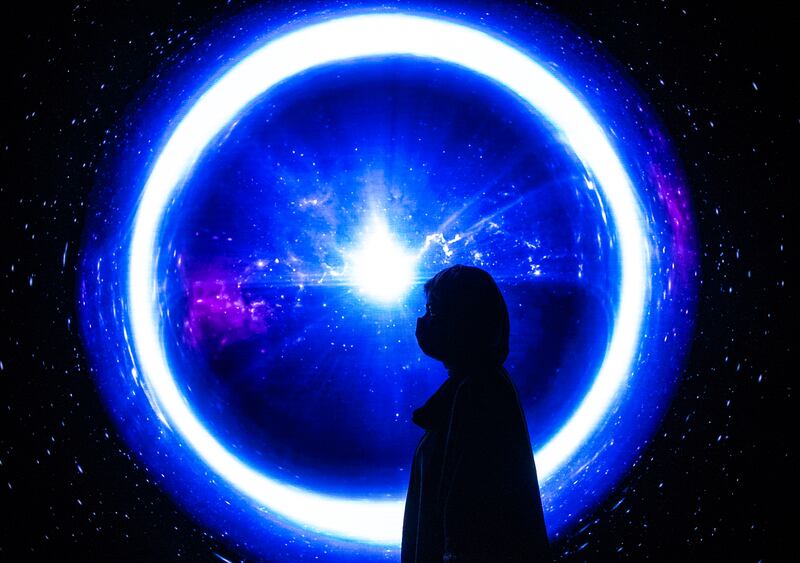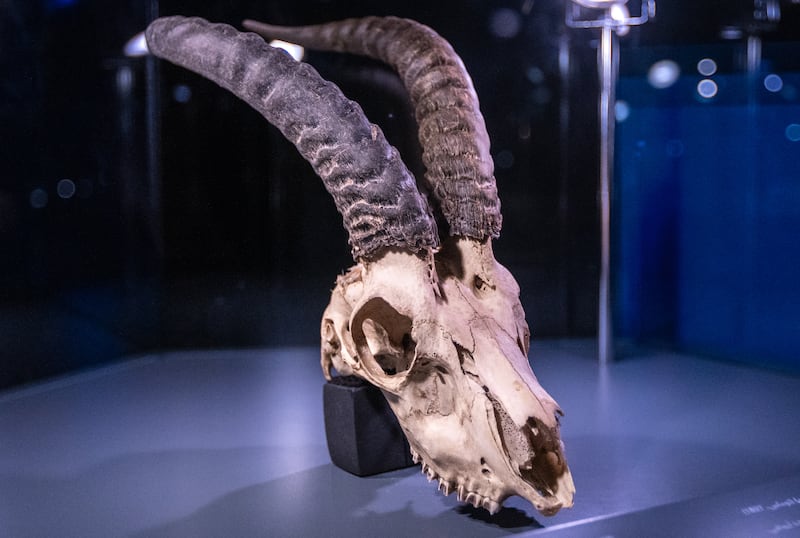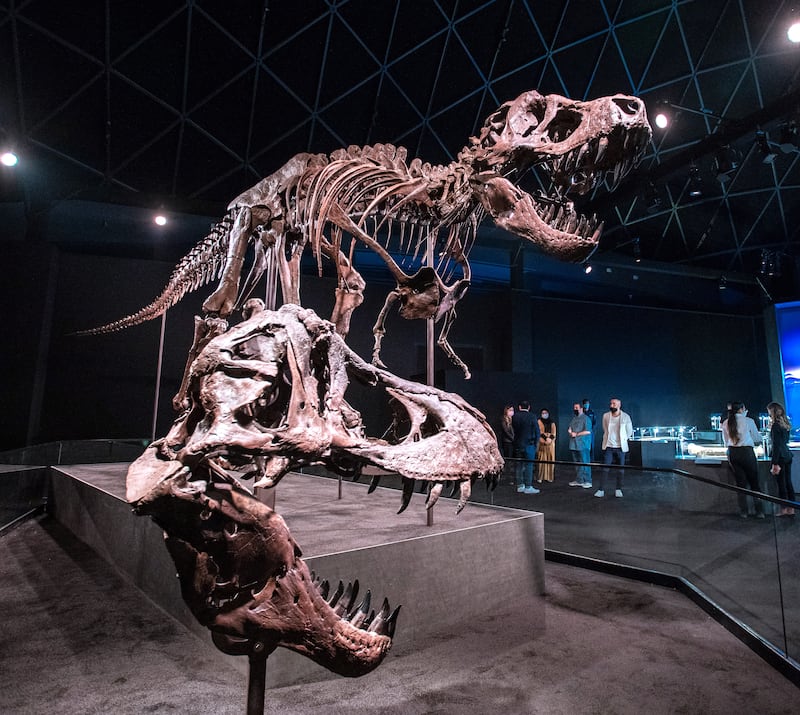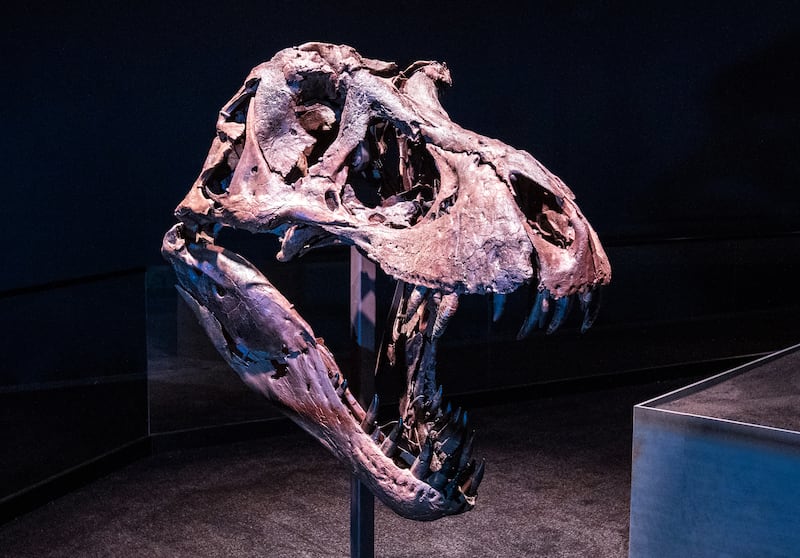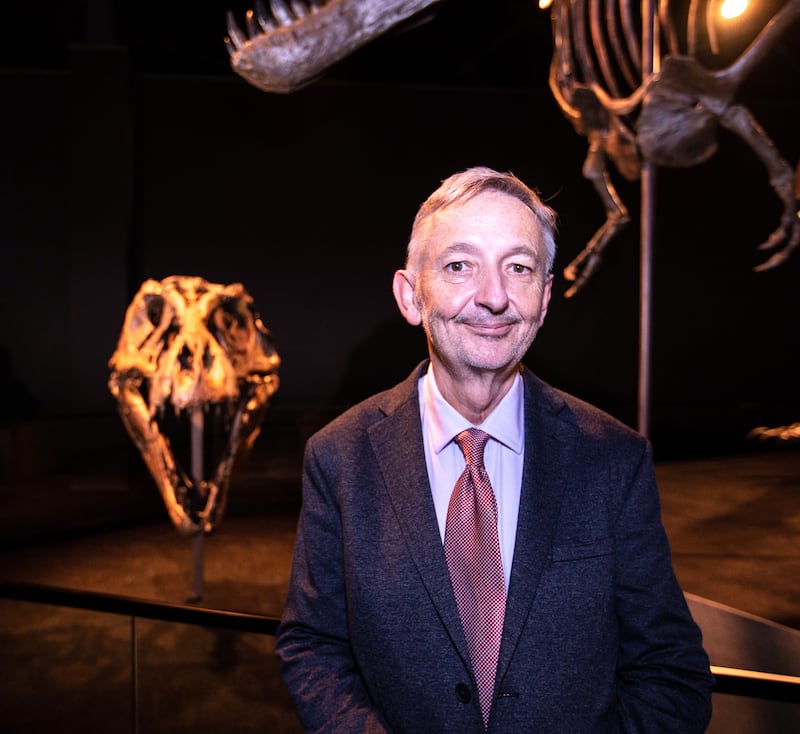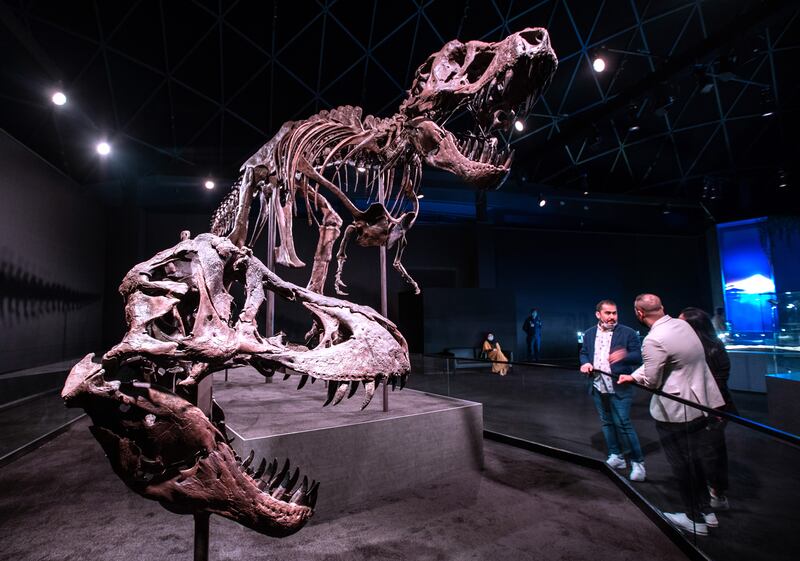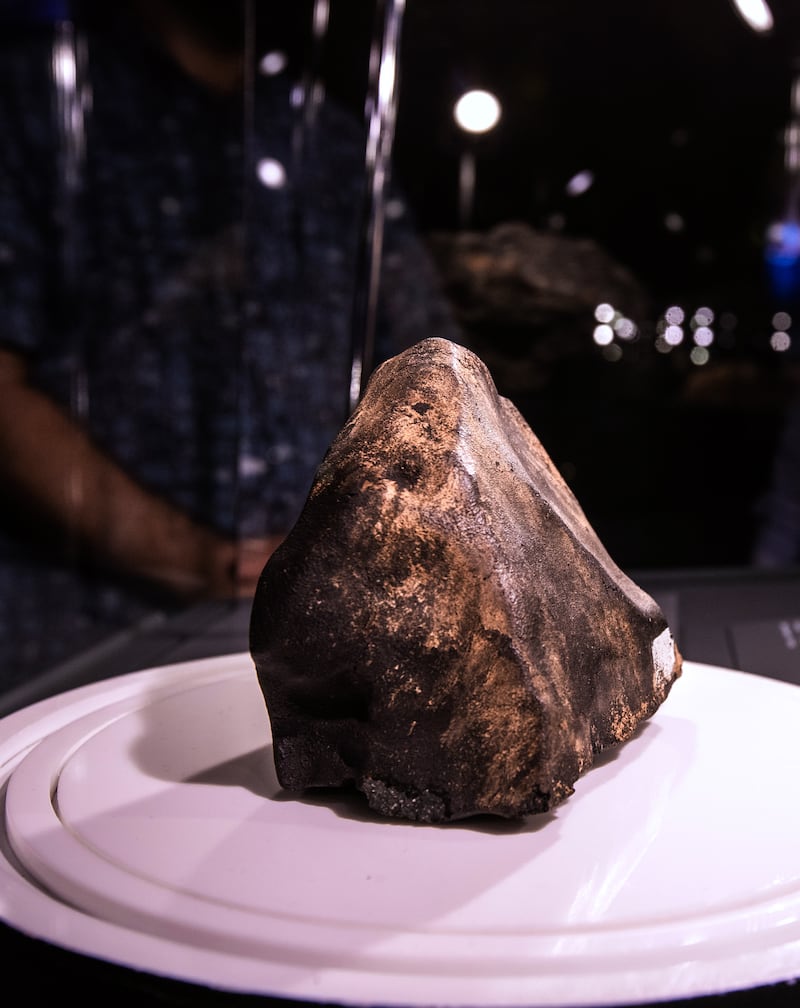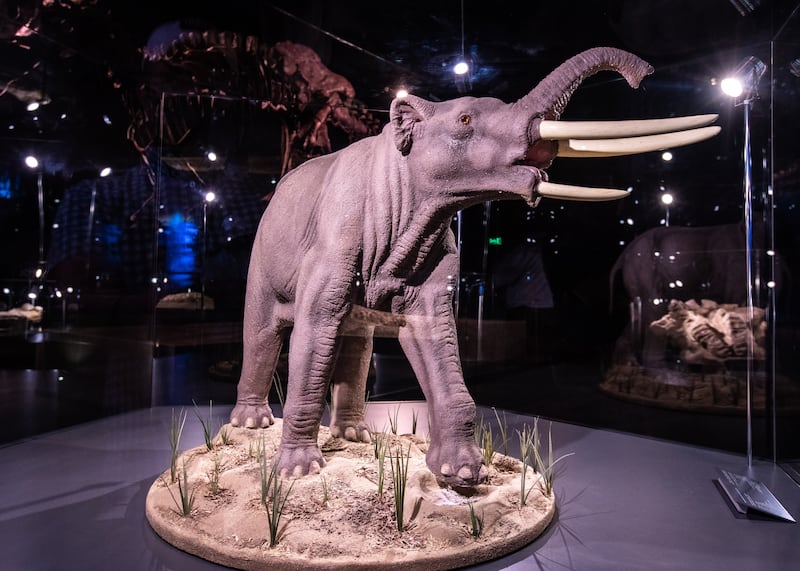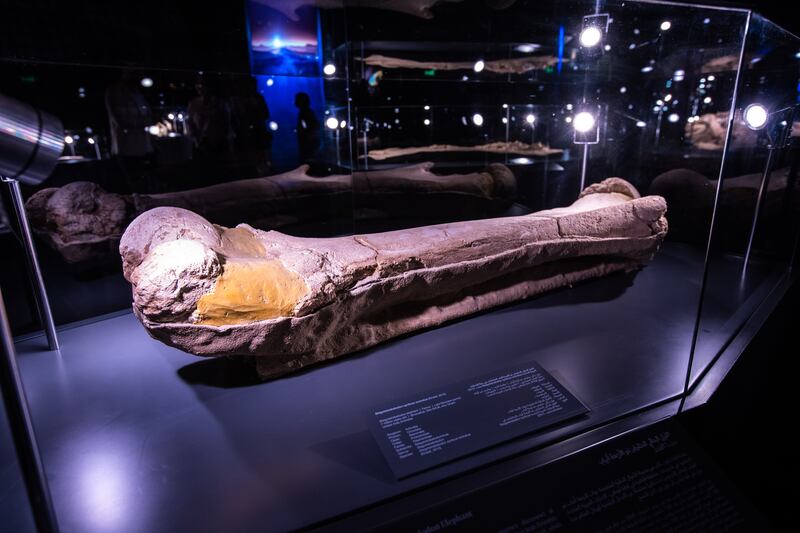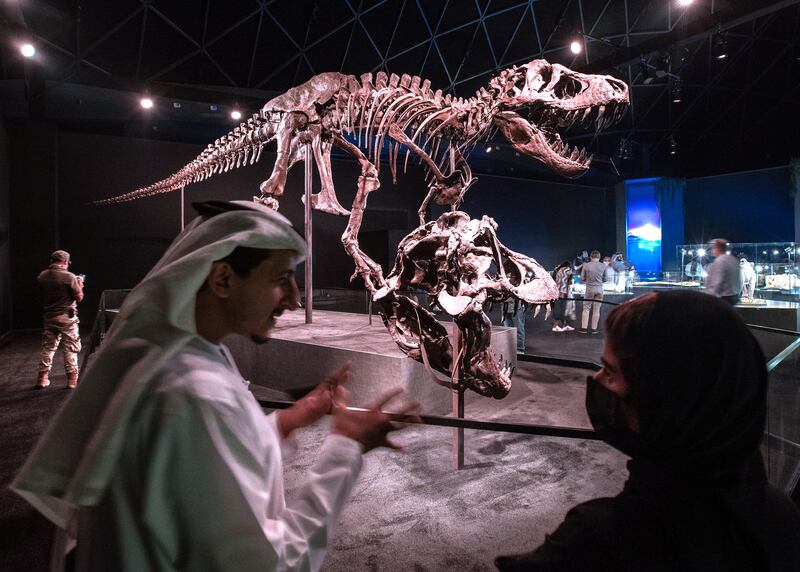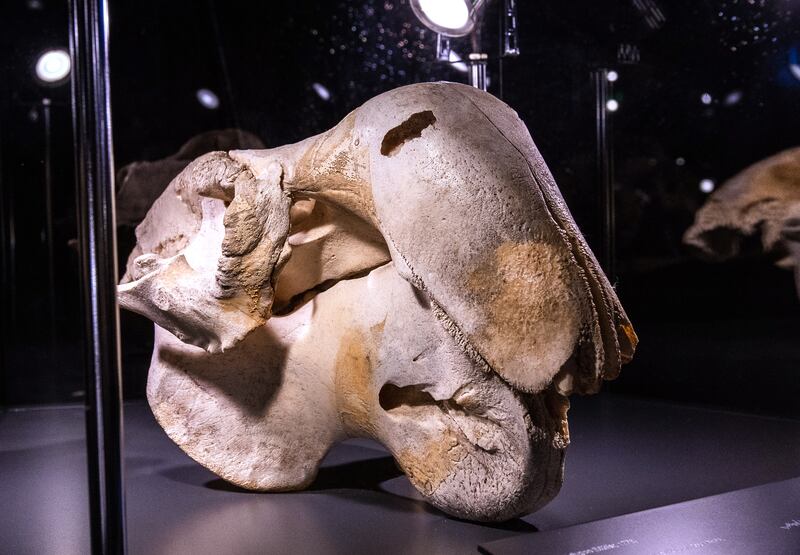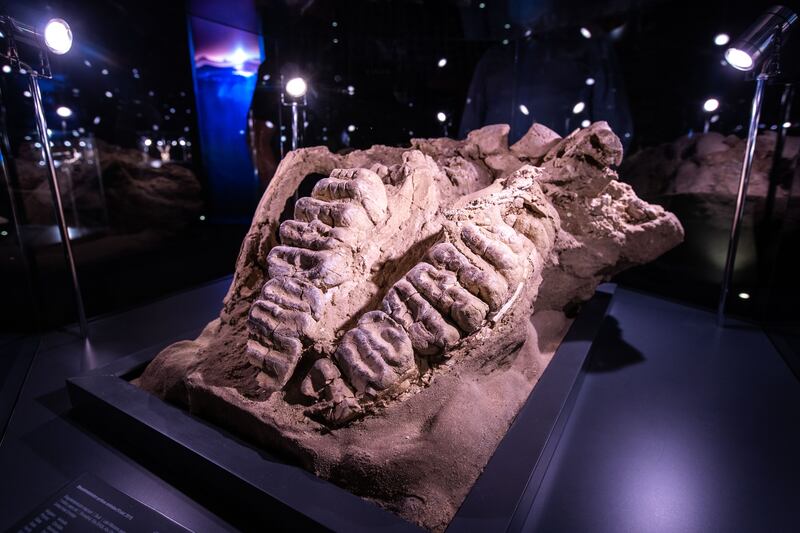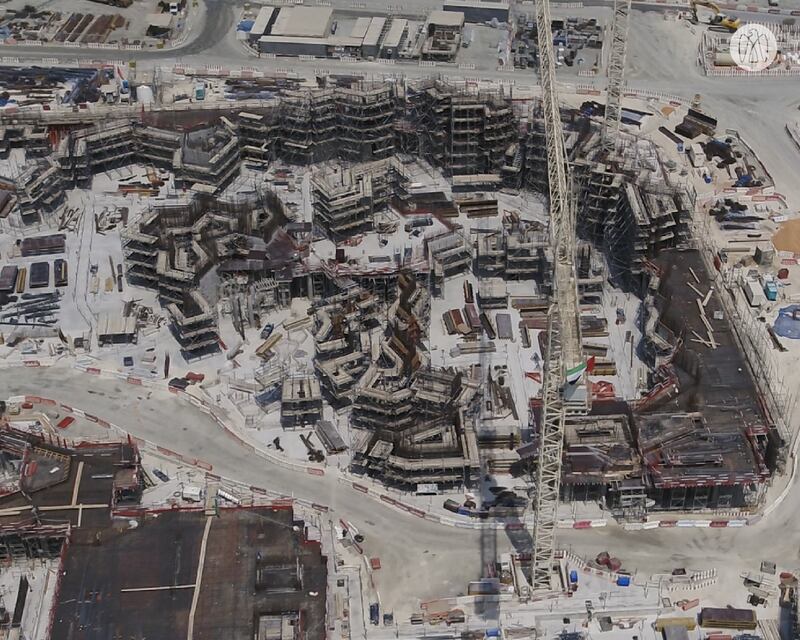The Murchison meteorite is a mind-warping piece of rock.
The specimen, which is currently on display at Manarat Al Saadiyat as part of an exhibition showcasing the collection of the coming Natural History Museum Abu Dhabi, crash-landed as a shower of stones in Australia in 1969 and has since revealed new information about the early solar system.
The meteorite has a variety of organic "stardust" compounds, as well as pre-solar grains that formed more than seven billion years ago.
It’s an exercise of rigorous daydreaming to imagine that kind of breadth of time. We understand it numerically, but on an intuitive sense, imagining back to when our solar system didn’t even exist, is a reach.
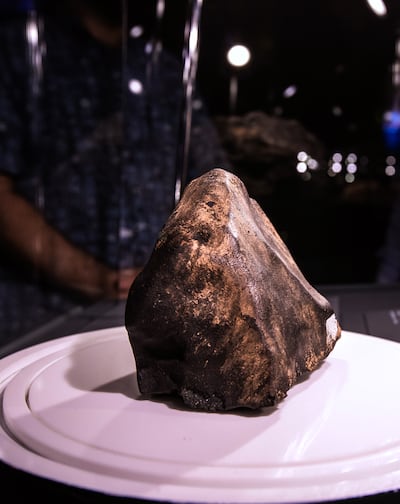
This black and gold rock, classified as a carbonaceous chondrite, is a snapshot of a time when the Sun, the Earth and all its astronomical neighbours were nothing but swirling gas and dust. To behold something that is half as old as the entire universe, to become aware of the vastness of our cosmological history, and the great dramas of the terrestrial and stellar world, is a kick.
But wonder is only part of what the Natural History Museum Abu Dhabi wants to evoke, says Mark Jonathan Beech, Head of Archaeology: Al Dhafra and Abu Dhabi, in the Historic Environment Department at the Department of Culture and Tourism – Abu Dhabi (DCT). It also wants to provide future scientists and researchers from the region an avenue to flourish.
“The meteorite is going to be the oldest thing in the Natural History Museum,” Beech says. “It is super-special because there are only a few museums in the world that have pieces of the Murchison meteorite. It tells us of the early traces of our solar system.”
The exhibition at Manarat Al Saadiyat is on until May 12 and was created to give a glimpse of the galleries of the future museum, which is under construction and due to be completed at the end of 2025.
The world's most famous T-Rex
After the Murchison meteorite display, the exhibition space opens up and you are suddenly faced with the bone-crushing, flesh-tearing teeth of Stan, the world's most famous Tyrannosaurus rex.
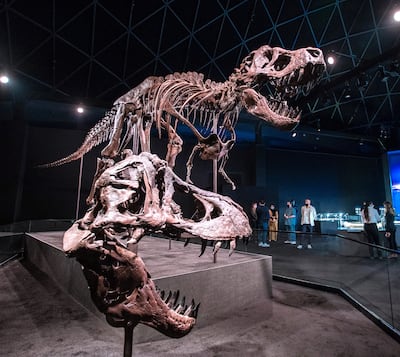
A 70 per cent complete skeleton, Stan is 11.7 metres tall and dates back 67 million years. It is also one of the best-preserved T-Rex skulls ever found. As the skull is too heavy to fix to the rest of the upright fossil, it has been displayed separately, while a replica head has been mounted on the model for display.
The skeleton was discovered in South Dakota in 1987 by amateur palaeontologist Stan Sacrison, after whom the fossil was named. He saw the dinosaur's pelvis on the side of a cliff when he was inspecting plants.
It is said more people have seen Stan, or casts of him, than any other T-Rex.
“There are about 60 Stans around the world in different museums, and most of them exhibit replicas,” Beech says. “This is the original Stan. The original Stan has a safe home. Stan is available for future scientists and researchers."
Other incredible displays
While the Murchison meteorite and Stan are the headlining displays at the exhibition, what follows next focuses more on local natural history..
Centre stage is the Stegotetrabelodon syrticus. These four-tusked elephants roamed Abu Dhabi seven million years ago, when the emirate had the Baynunah River flowing through a landscape reminiscent to the African savanna ecosystem.
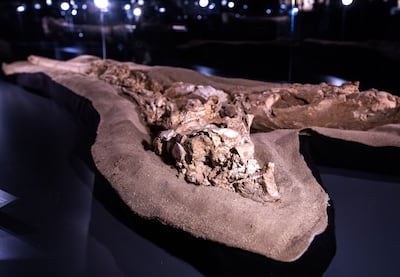
“It’s hard to imagine when you see the western region of Abu Dhabi today with its dry desert and sabkha plains in between. But it was very much like East Africa.”
The stegotetrabelodon syrticus was common in the region then. The exhibition displays fossils of the elephant from the Baynunah geological formation and fossilised trackway sites in Al Dhafra region of Abu Dhabi. With femurs the size of dining tables, the fossils hint at the immensity of these Pliocene-era giants. A scale model also shows us what the creature looked like.
“The three fossils that are from the Shuwaihat site, the skull, the jaws and this leg bone, are all from a juvenile stegotetrabelodon,” Beech says. “The scale model is also only about 12 per cent of the original size of the elephant. Stan is actually four metres in height. These elephants were almost the same height.”
From the prehistoric age to modern day
The exhibition continues on a chronological route as it pays homage to other animals from the region, including the dugong and the gazelle.
“The next zone in the museum is really talking about modern life in the UAE and the important things in the UAE is, of course, desert environments and mountains, but also the sea,” Beech says.
“The dugong, or the sea cow, is very important because of the efforts of the Environment Agency in Abu Dhabi. It was very much an endangered species. It’s disappearing in many Indian Ocean countries, but in the Arabian Gulf, we have the second-largest population of dugongs in the world, with more than 3,000 in Abu Dhabi,” Beech says. “The sand gazelle because, well, it’s in the name Abu Dhabi, which means the father of the gazelle.”
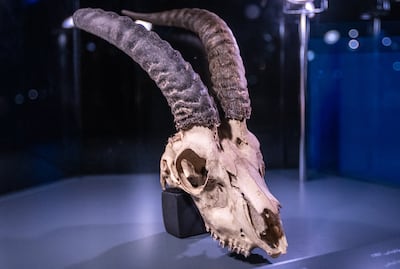
After a brisk but expansive journey across time and space, the exhibition prompts visitors to consider the planet’s state today, asking them to take a pledge to contribute to its well-being.
“We then focus on the blue marble,” Beech says of a video showing the Earth in rotation. “This is the image of our planet, the beautiful image showing, you know, the globe, how sensitive it is. This really is to start talking about how to protect the planet today.”
This ties in with the broader mission of the Natural History Museum Abu Dhabi, Beech says.
“The main thing about the museum is it's not just a display of dinosaurs,” he says. “It will have thousands of specimens inside it. It will also have a research institute. So it's not just the stuff on exhibition, it's all the curatorial form, behind the scenes, and the laboratories where we can prepare fossils, these fossils here that are from Abu Dhabi.”
